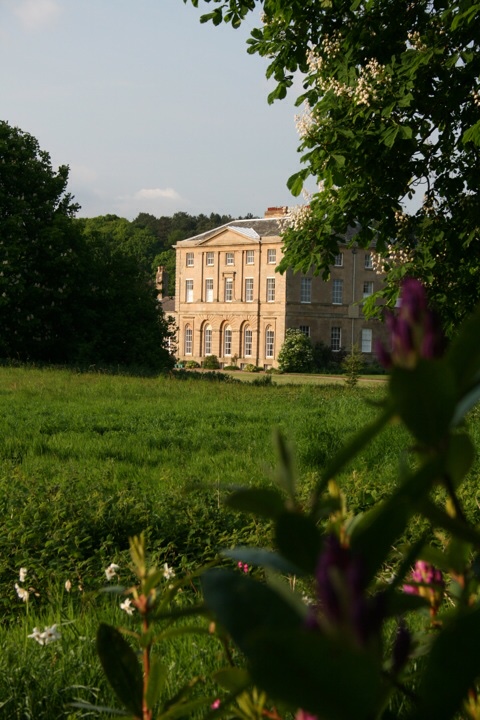
Papplewick Hall
Nottinghamshire NG15 8FE
| Email: mail@papplewickhall.co.uk

Nottinghamshire NG15 8FE
| Email: mail@papplewickhall.co.uk
Papplewick Hall was built by Frederick Montagu MP between 1781-86, following his retirement from public life in London. He demolished a much older house on the site, formerly occupied by his parents, inherited by him in his twenties - the stables and cellar of which survive to this day.
Frederick Montagu was a bachelor, and built Papplewick Hall for himself. This explains its relatively modest size, and the compact number of rooms. Although its architect is not known precisely, it incorporates many popular design features of the day - a cantilevered staircase, a fine drawing room ceiling in the 'Adam' style, and classical proportions throughout.
The house that previously occupied the site of Papplewick Hall was probably built in 1520. It is thought that, before that building, an Inn stood on the site, next to the old road that ran from Nottingham to the south, through Papplewick village, up what is now a bridle way past Newstead Abbey, and thence on to Mansfield. Blidworth Waye, which now connects the village to the Mansfield Road, was created after the Hall was built. When the Inn was taken down, its cellars were left behind, and these survive to this day.
The land on which the Hall is situate was, previously, one of the more important farms on the Newstead Estate; and the Newstate Estate was, of course, at the heart of Sherwood Forrest. On 15th August 1654, John Evelyn describes passing through Sherwood Forest, and coming to Papplewick, "an incomparable vista, with the pretty castle near it". It is not clear which 'castle' this referred to. It could have been Papplewick Mill, which is castellated, but this is some distance from the 'incomparable vista'. There could have been a castle, of which all trace has disappeared. Or it could have been a reference to the building (a large farmhouse) that previously stood on the site of Papplewick Hall, which had a prominent tower. Ninety years later, it is recorded in a pencil sketch, the only one in existence of the old building, by 'Mrs Pendarves' - who became Mrs Delaney after marrying Dr Delaney. Mrs Delaney was a great friend of the parents of Frederick Montague. The picture is dedicated to Mrs Montague, and dated 24th November 1742.
The Priory of Newstead retained control of Papplewick village for 400 years. On 21st July 1539, the twelve Canons remaining surrendered the property to Herny VIII's agent, Sir Joh Byron. By Grant dated 28th May 1540, Sir John Byron bought Newstead and its environs, including Papplewick and Linby, for £810. Papplewick remained in the Byron family until the early 1700s.
The Byrons were constantly short of cash, and William Byron sold Papplewick Farm to Sir Theodaore Colladon and his wife Lady Susannah Mary Amyot Colladon. Sir Theodore was a physician, and had looked after the family and children of Charles II. They lived in London, though had estates in Yorkshire. One day, on their way up to Yorkshire, they were driving past the large farmhouse that previously stood on the site of Papplewick Hall, when a wheel of their carriage broke. While it was being repaired in the blacksmith's shop in Papplewick village (a building that still survives), Lady Colladon was seated looking out over the park beyond, and remarked to her husband that she "would very much like to live here". Being an obliging chap, he bought the estate, which in turn, then passed to their daughter Anne by Sir Theodore Colladon's Will Trust, after her mother's life interest.
Anne subsequently married Charles Montague, and they had three children - the youngest of whom was Frederic, who built Papplewick Hall.

